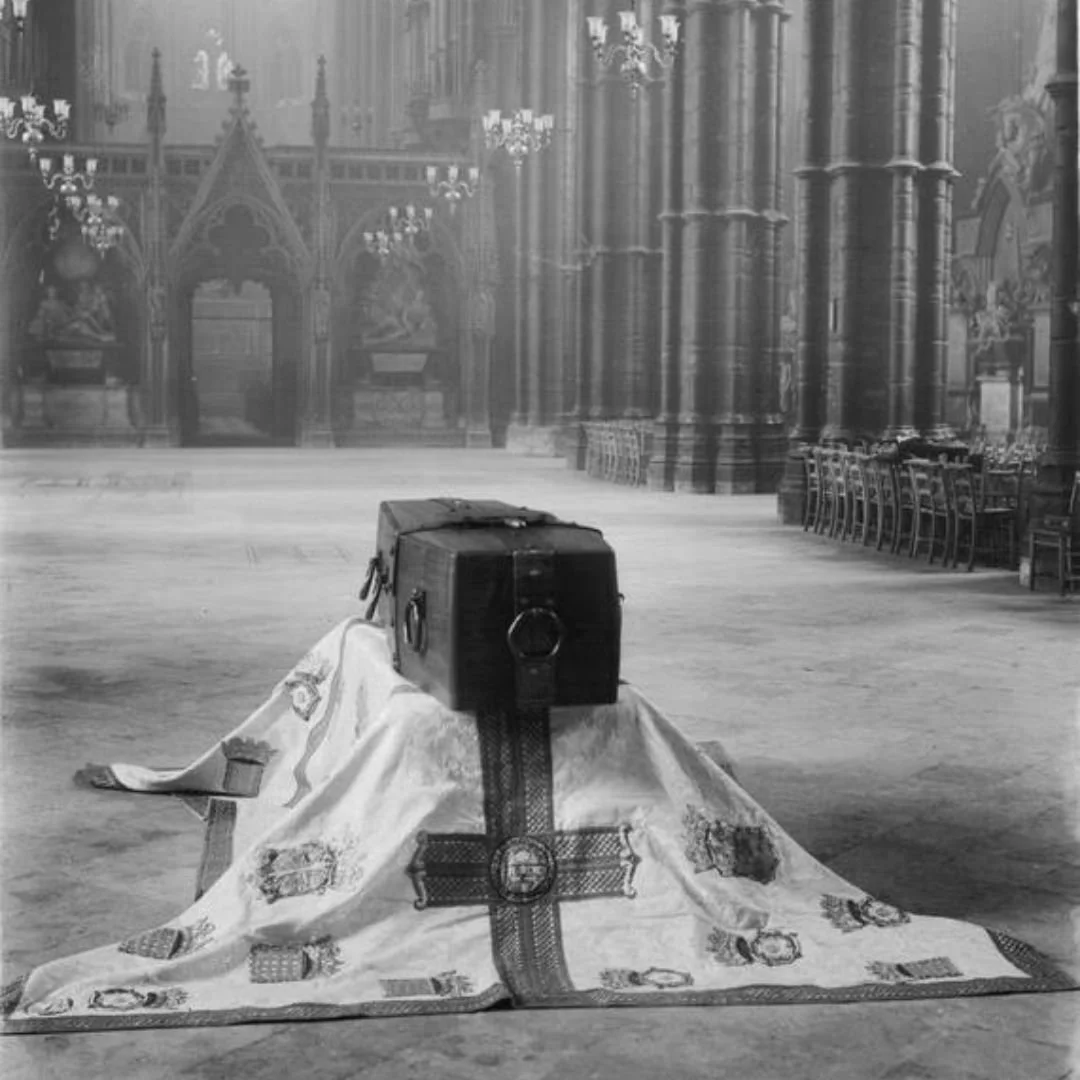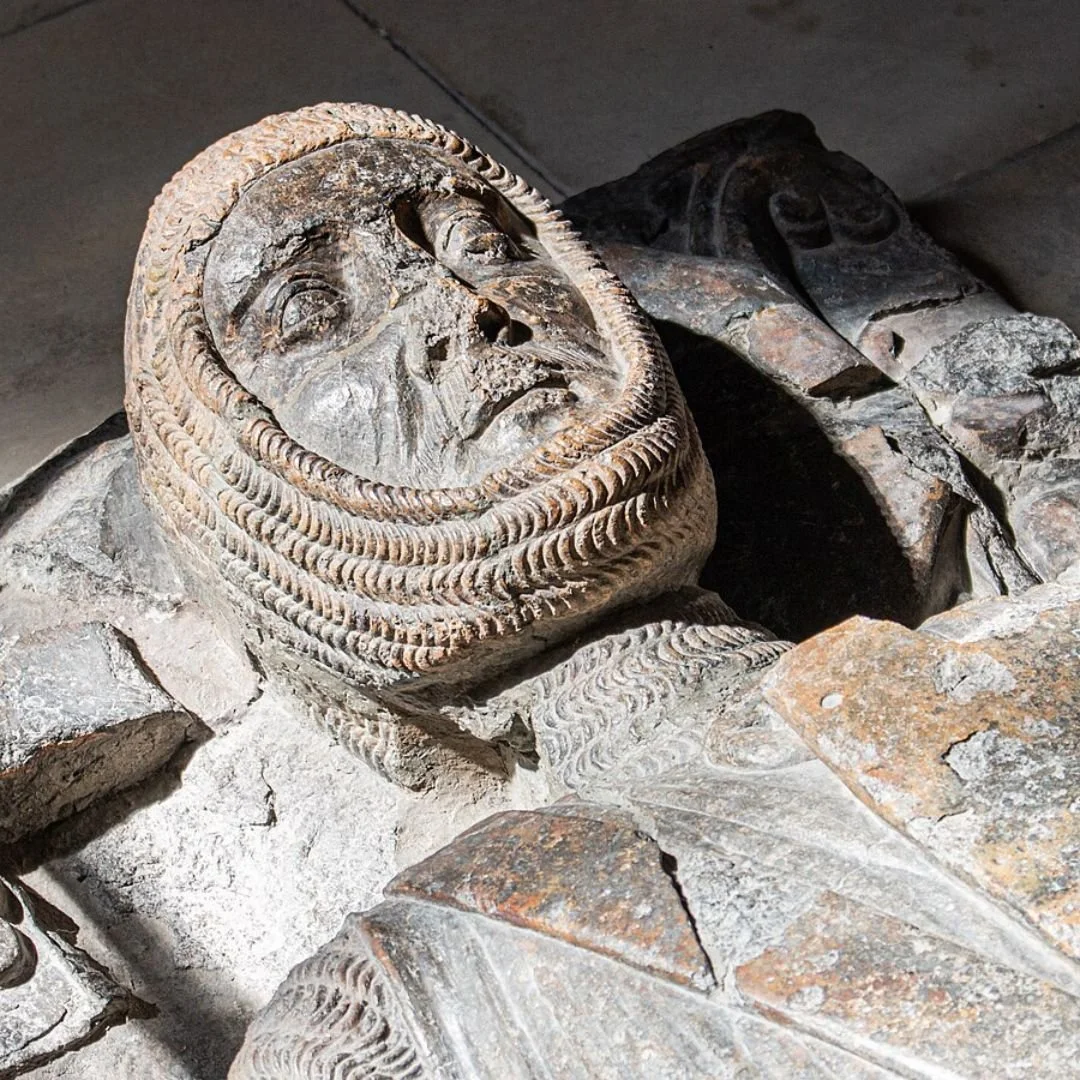The Unknown Warrior At Westminster Abbey, London
The burial of the Unknown Warrior in Westminster Abbey on November 11, 1920 was one of the most profoundly moving moments in British history.
An unidentified body was brought from the battlefields of France with full military honours, to honour the countless British and Empire servicemen whose graves were unknown.
It was a collective moment of national mourning and remembrance for the over one million British and Empire servicemen who died in the First World War.
This is the beautiful true story.
The concept originated with Reverend David Railton MC, a British Army chaplain on the Western Front, who, in 1916, witnessed a solitary grave near Armentières bearing the inscription: "An Unknown British Soldier."
In August 1920, he wrote to the Dean of Westminster, Herbert Ryle, suggesting that an unknown "comrade" be brought home for burial in the Abbey.
Ryle enthusiastically embraced the idea, substituting "Warrior" for "comrade," and secured the support of Prime Minister David Lloyd George.
Despite initial reluctance from King George V, who feared reopening emotional wounds, the significance of the proposal soon became clear, leading to royal and governmental approval.
The task of selecting the Unknown Warrior was overseen by Brigadier-General L. Wyatt.
To ensure absolute anonymity, the bodies of four unidentified British soldiers, one from each of the main French battle areas: the Somme, Aisne, Arras, and Ypres, were exhumed.
On the night of November 8, 1920, the four bodies, each covered with a Union Jack, were taken to the chapel at the Military Headquarters in St. Pol-sur-Ternoise.
Brigadier-General Wyatt, in a carefully secretive ceremony, randomly selected one of the bodies, thereby becoming the only person to know the exact origin of the Unknown Warrior.
The remaining three were immediately re-interred.
The chosen body was placed in a plain coffin made of English oak from Hampton Court Palace and transported to Boulogne.
On November 10, the coffin, accompanied by a naval escort, was transferred onto HMS Verdun for the journey across the Channel. Upon reaching Dover, the Warrior was placed aboard a train, travelling in a consecrated luggage van to Victoria Station, London.
The journey was marked by silent, solemn crowds gathered at stations along the way. At Victoria, the casket was guarded overnight by sentries from the Grenadier Guards.
The following day, November 11, 1920 (Armistice Day), the Unknown Warrior was granted a full state funeral, an unprecedented honour for an anonymous person.
The Procession: The oak casket was placed on a gun carriage, pulled by six black horses, and escorted by senior officers. Resting on the coffin were a medieval crusader's sword and a battered steel helmet.
A Field Marshal's salute boomed from Hyde Park.
The Cenotaph: The cortege's first stop was Whitehall for the simultaneous unveiling of the permanent Cenotaph, designed by Edwin Lutyens.
The procession reached the Cenotaph at 11:00 am, the exact hour of the 1918 Armistice.
King George V unveiled the monument and then placed a wreath upon the Unknown Warrior's coffin, followed by the two minutes of silence observed across the Empire.
Westminster Abbey: The solemn journey continued to the Abbey.
The nave was lined by 100 recipients of the Victoria Cross. The congregation was not composed of foreign dignitaries, but primarily of 100 war widows and women who had lost all their sons, serving as the guests of honour.
The Burial: The Unknown Warrior was buried in a grave near the West Door of the Nave. The grave was filled with soil brought from the battlefields of France.
The coffin was covered with a slab of black Belgian marble bearing an inscription composed by Dean Ryle, the letters of which were made from melted-down First World War ammunition: “BENEATH THIS STONE RESTS THE BODY. OF A BRITISH WARRIOR.
”UNKNOWN BY NAME OR RANK. BROUGHT FROM FRANCE TO LIE AMONG. THE MOST ILLUSTRIOUS OF THE LAND. AND BURIED HERE ON ARMISTICE DAY. 11 NOV: 1920...”
The public reaction was overwhelming.
The grave was only planned to be open for three days, but an estimated 1.25 million people queued for hours, often in the cold and rain, for the opportunity to pass the site and lay tributes.
The queue stretched for over seven miles.
The Tomb of the Unknown Warrior became and remains Britain’s most sacred and poignant war memorial, a substitute grave where families could mourn their own missing loved ones.
The tradition of royal brides laying their bouquets on the tomb began in 1923 with Lady Elizabeth Bowes-Lyon (later Queen Elizabeth The Queen Mother), in memory of her brother Fergus, killed at Loos.
If you’d like to see it tomb is located just inside the Great West Door of the Abbey, open to visitors throughout the year.
You can check the official Westminster Abbey website for current opening times and admission details.
If you enjoyed this article please follow Exploring GB on Facebook for more!
Don’t forget to check out our latest blog posts below!
Thank you for visiting Exploring GB.


















